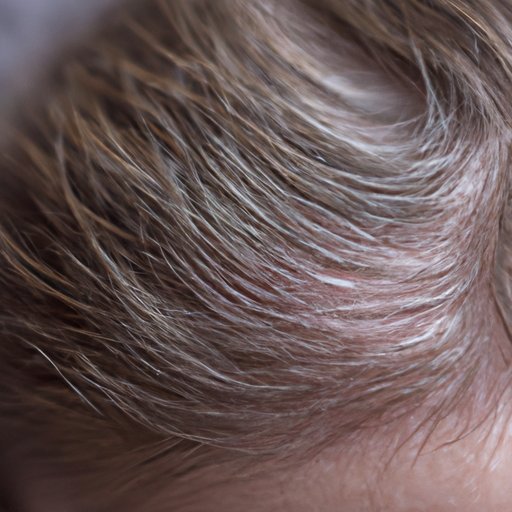Introduction
If you’ve ever found your hair stubbornly refusing to lay flat or conform to the style you’re going for, you may have dealt with a hair cowlick. These awkward patches of hair can be frustrating, often appearing at the most inconvenient spots along the hairline, often near the crown. In this article, we’ll break down what causes cowlicks, how to tame them, and even how to embrace them as a unique part of your hair’s personality.

Breaking Down the Science Behind Hair Cowlicks
Before we dive into how to style and embrace cowlicks, let’s first explore what exactly causes them. Cowlicks are essentially whorls of hair that grow in a circular or spiral pattern at the scalp, causing the hair to stand up or appear to go in the opposite direction of the surrounding hair. This unique growth pattern is a result of the hair follicles’ orientation in the scalp, and while it is still not entirely understood, genetics play a significant role in the development of cowlicks.
Along with genetics, factors such as hair length and texture can exacerbate a cowlick. For instance, if hair is cut too short around the crown, it may stick up in a more noticeable way. Additionally, fine hair is more susceptible to cowlicks than thick hair because it is more flexible and has less weight to pull it down.
The Art of Styling Hair Cowlicks
While cowlicks can be pesky to work with, there are some tips and techniques to manage and even tame them.
If you’re styling wet hair, it’s best to work with your cowlick rather than against it. Use a blow dryer to direct the hair in the natural direction of the cowlick, gently coaxing the hair into place.
If you’re working with dry hair, you can apply a small amount of styling cream or pomade to tame stubborn strands. For hair that just won’t stay in place, you can use a bit of hairspray to hold it down.
One technique for smoothing cowlicks is to use a flat iron. Simply clamp the flat iron down on the cowlick, pressing down firmly, and slowly glide it down the hair shaft. This should help to smooth the hair and create a more polished look.
When choosing products for managing cowlicks, look for lightweight options that won’t weigh hair down or make it greasy. Products that contain silicone or dimethicone can help to smooth the hair without making it heavy or sticky.
Embracing the Quirks
Instead of fighting against your cowlick, why not consider embracing it as a unique part of your hair’s personality? By working with your hair’s natural growth patterns, you can create hairstyles that accentuate your cowlicks in a flattering way.
For instance, some people choose to style their hair in a way that allows the cowlick to be a centerpiece of the look. For example, slicked-back hairstyles or ponytails that accentuate a crown cowlick can create a striking, edgy effect.
You can also incorporate your cowlick into braids and updos, using it as a focal point rather than trying to hide it.

The Psychology of Hair Cowlicks
Cowlicks can have an impact on how we perceive ourselves and our physical appearance. It’s not uncommon for people with cowlicks to feel self-conscious, particularly if the cowlick is in a prominent spot. However, it’s important to remember that our hair is just a small part of who we are, and a cowlick doesn’t define us.
If you’re struggling with confidence in regards to your cowlick, try focusing on the parts of your appearance that you love and celebrating those. Additionally, seeking support from friends and family members can help to remind you that your cowlick is just one small characteristic that makes you unique.
From Myths to Facts
There are many myths surrounding cowlicks, so let’s debunk a few of them.
Myth #1: Cowlicks can be “cured” through hair products or treatments. This is not true – because cowlicks are caused by hair follicle orientation, there’s not much that can be done to change their natural growth pattern. While styling techniques and products can help to manage cowlicks, they won’t “cure” them.
Myth #2: Cowlicks only appear on the crown of the head. While cowlicks are most commonly found at the crown, they can also appear in other areas, such as the hairline or at the nape of the neck.
Myth #3: Cowlicks are a sign of a lack of hair care. Cowlicks have nothing to do with hair hygiene or how often someone washes their hair. They are a natural part of hair growth patterns.
Conclusion
Whether you’ve been fighting against your cowlick for years or are just learning to work with it, remember that your hair is unique and beautiful in its own way. By understanding what causes cowlicks, learning how to style and manage them, and embracing them as a part of your hair’s personality, you can find confidence and comfort in your natural hair quirks.


